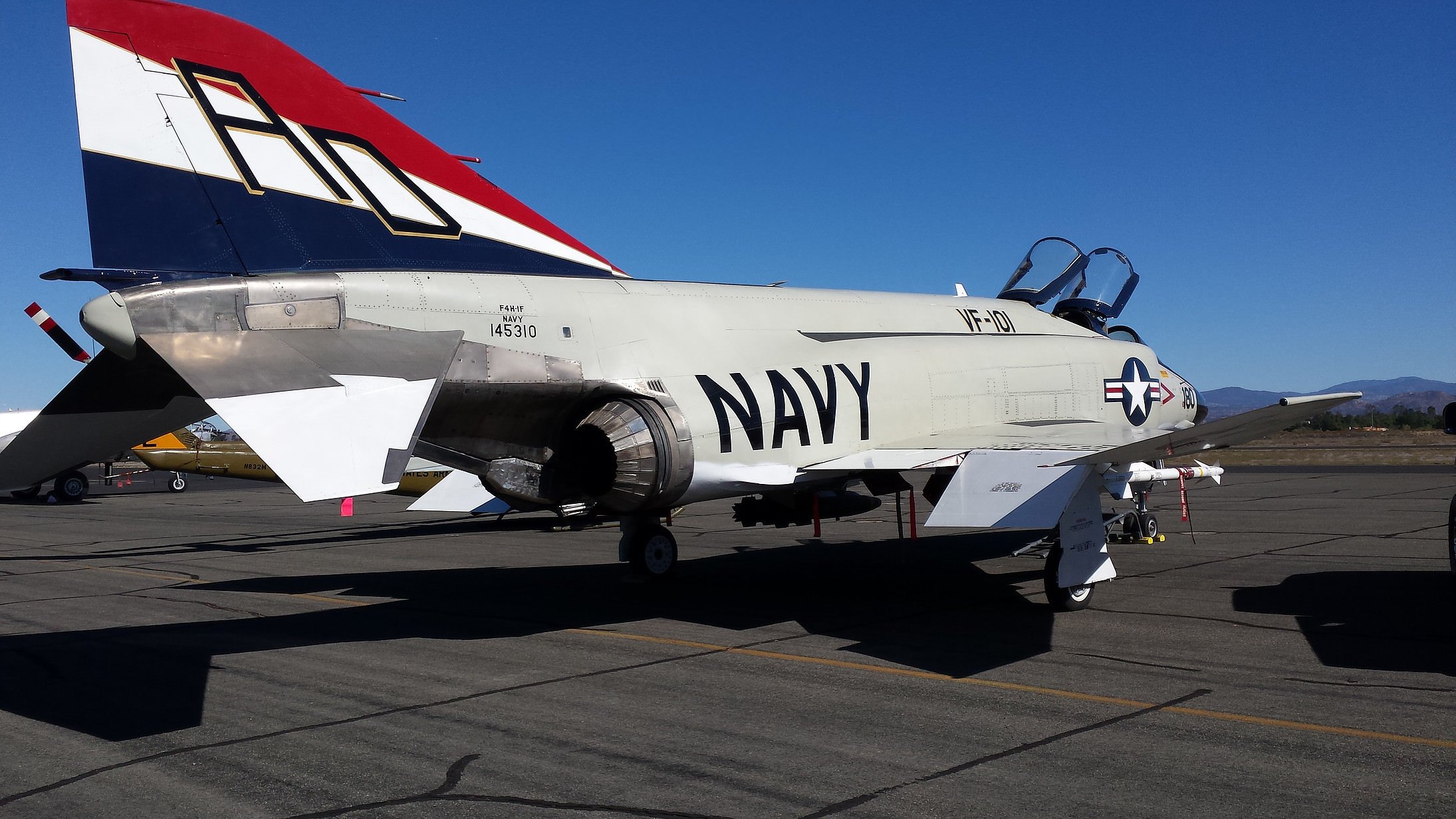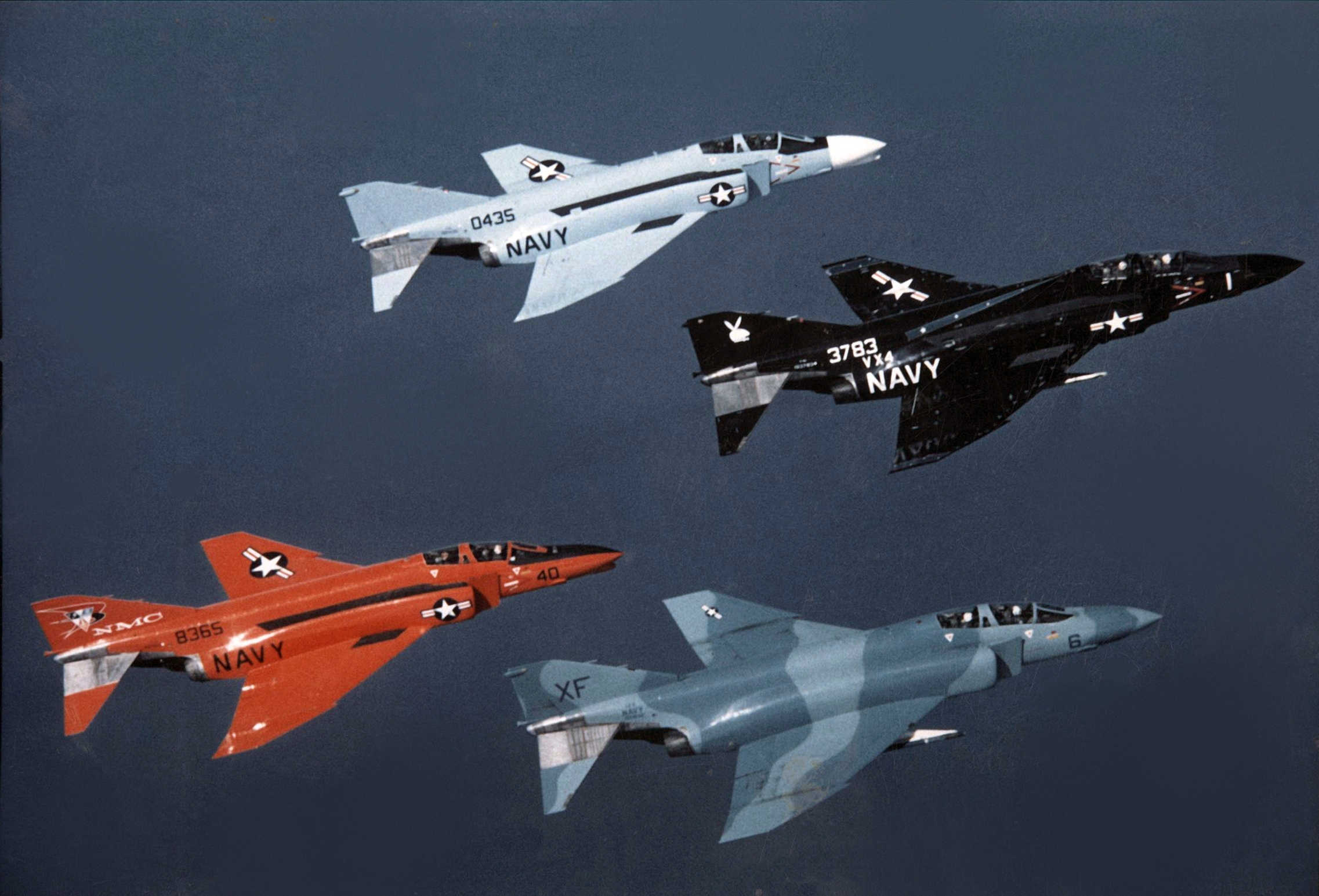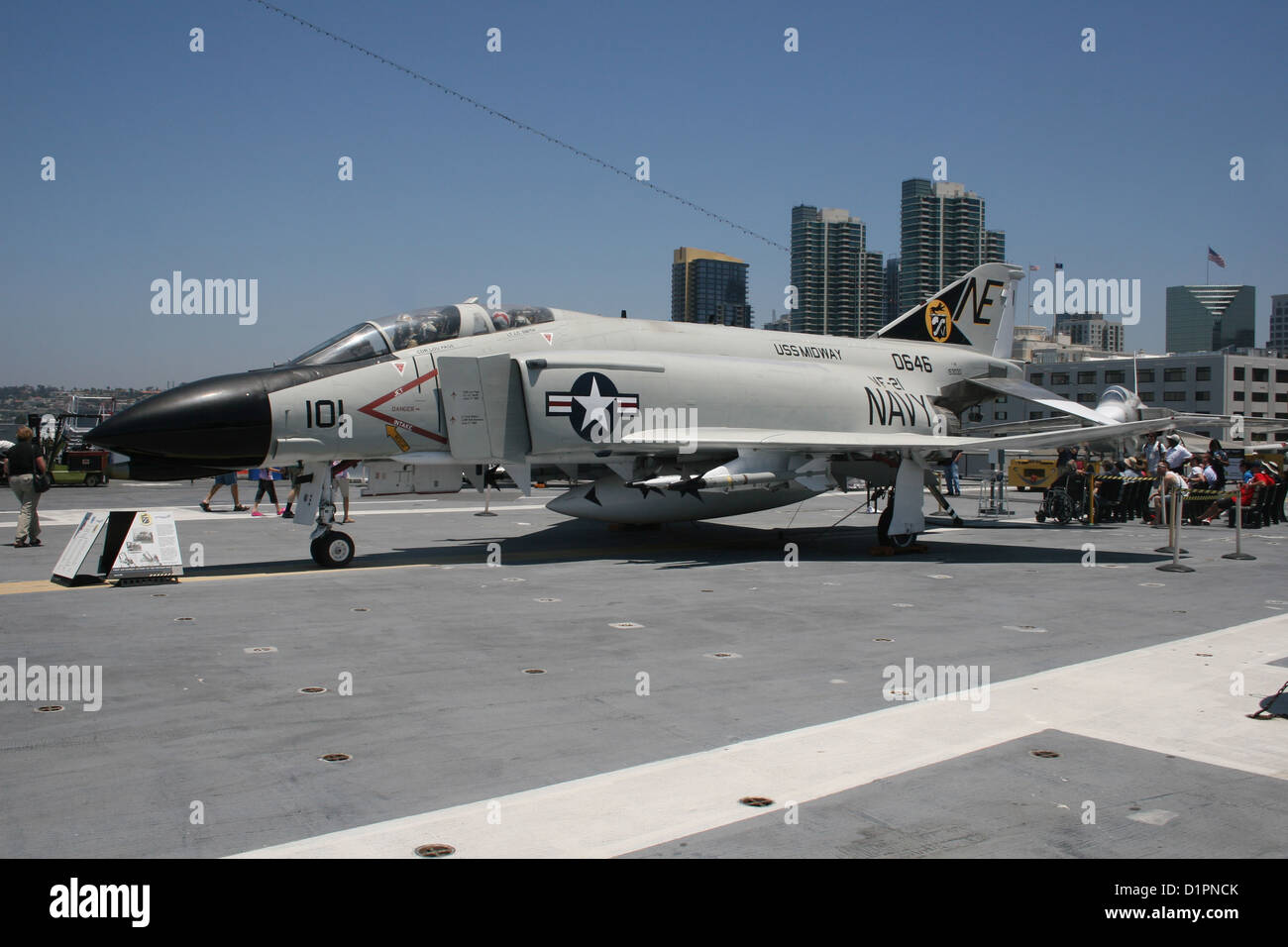F4 Phantom Navy - After testing and evaluating the loaned Navy F-4Bs, the first F-4C production was delivered to the U.S. Air Force in November 1963. The 4453rd Combat Crew Training Wing at MacDill AFB was the first unit to receive Phantoms. The first fighter unit to receive the F-4C was the 12th Tactical Fighter Wing in 1964.
An RF-4C with auxiliary fuel tanks in flight August 1968. This aircraft was assigned to the 152nd Tactical Reconnaissance Group, Nevada Air National Guard.
F4 Phantom Navy

179th Tactical Reconnaissance Squadron, 179th Fighter Interceptor Squadron; 148th Tactical Reconnaissance Group, 148th Fighter Interceptor Group (RF-4C and F-4D)
Us Navy Vf 111 Skin For F 4 Phantom Ii
The Phantom entered service with the US Navy on 30 December 1960 with VF-121 pacemakers at NAS Miramar. VF-74 Be-devilers at NAS Oceana became the first Phantom squadron to receive its F4H-1s (F-4Bs) on 8 July 1961.
These types of units are known in naval parlance as Replacemt Air Groups (RAG) or Fleet Replacemt Squadrons (FRS). The purpose of these special training groups is to provide the Navy with F-4 Phantom-qualified aircrew and maintenance personnel. During the Vietnam War, they also provided spare aircraft to replace those lost in the war.
The DACT detachment of VF-101 is based at NAS Key West, Florida and flies the A-4 Skyhawk and the F-4 Phantom II.
The DACT detachment of VF-171 is based at NAS Key West, Florida, flying the A-4 Skyhawk and F-4 Phantom II. VF-171 took over the training role of the Atlantic Fleet F-4 Fleet Replacemt Squadron after VF-101 became the Fleet Replacemt Squadron for the F-14 Tomcat.
Mcdonnell F 4 Phantom Ii Cutout Metal Sign. Measures 23 1/2\
These units provide services to the Navy such as air combat training and electronic warfare simulation support.
The US Marines received their first F-4Bs in June 1962, with VMFA-314 Black Knights at MCAS El Toro, California, becoming the first squadron. In addition to the attack variety, the Marines also operated several tactical reconnaissance RF-4Bs. Marine Phantoms of VMFA-531 Gray Ghosts arrived in Vietnam on 10 April 1965 and flew close air support missions from land bases and the USS America. Marine F-4 pilots claimed three MiG emys (two while on exchange with the USAF) at a cost of 75 aircraft lost in combat, mostly to fire, and four to accident. On 18 January 1992, the last Marine Phantom, an F-4S, was retired by VMFA-112 Cowboys.
NOTE: USMC forces change their tail to the Carrier Air Wing (CVW) tail code when flying on aircraft carriers as part of the USN/USMC CVW.

These types of units are known in Navy and Marine Corps parlance as Replacemt Air Groups (RAG) or Fleet Replacemt Squadrons (FRS). The purpose of these special training units is to equip the Fleet Marine Force (FMF) with F-4 Phantom fighter jets and maintenance personnel. During the Vietnam War, they also provided airplanes to replace those lost in the war. A US Navy McDonnell F-4N Phantom II (BuNo 151491) of Fighter Squadron VF-161 "Chargers" in flight. 151491 was assigned to VF-161, Carrier Air Wing 5 (CVW-5), aboard the aircraft carrier USS Midway (CV-41) from 1973 to 1977.
File:phantom Fg1 892 Sqn On Hms Ark Royal (r09) 1972.jpg
What makes the F-4 Phantom so special? In the 1950s, McDonnell Aircraft began development of what proved to be one of the largest military aircraft of the post-World War II era. Originally developed as an attack aircraft with four 20mm cannons, the F-4 Phantom evolved into an advanced - but not complete - all-rounder equipped with advanced radar and missile weapons. Just thirty-one months after its first flight, it was adopted by the US Navy in 1961 - becoming the fastest, highest flying and longest flying aircraft.
Soon after, the aircraft was adopted by the United States Marine Corps and the United States Air Force. The tandem two-seat, two-engine, all-weather, long-range supersonic fighter jet and fighter-bomber suited the military's needs during the Cold War.
It is fully equipped and can carry more than 18,000 pounds (8,400 kg) of weapons in nine hard-to-reach locations, including air-to-air missiles, air-to-ground missiles and different bullets. Later models were also fitted with the M61 Vulcan rotary cannon to give the warbird more firepower. The aircraft is also equipped with a Westinghouse APQ-72 radar, IR detector in a small area under the nose.
The plane had colorful nicknames, including "Spook," "Flying Brick," "Double Ugly," "Rhino," and "Big Iron Sled." However, it was named the Phantom II on 3 July 1959 during an event held at the McDonnell factory in St. Louis, Mo., to celebrate the company's 20th anniversary
F 4 Phantom: The Us Navy's Best Combat Plane Ever?
McDonnell Douglas F-4 Phantom II can fly twice the speed of sound – Mach 2.2, setting sixteen records for speed, altitude and time to climb; He set the world altitude record of 98,556 feet in 1959 and the speed record of 1,604 mph on a 15-mile circuit in 1961.
It is the only aircraft used by two US military air show teams: the Navy Blue Angels and the Air Force Thunderbirds; who flew the Phantom II from 1969 to 1973.
The mockup of the U.S. Navy McDonnell F3H-G/H. In 1953, McDonnell Aircraft began redesigning its F3H Demon fighter in search of increased capabilities and better performance. The company developed several projects, including a variant powered by a Wright J67 engine and variants powered by two Wright J65 engines or two General Electric J79 engines. The J79 version promises a speed of Mach 1.97. On September 19, 1953, McDonnell approached the US Navy with a proposal for the Super Demon. In particular, the aircraft is modular - it can be fitted with single or double-seat noses for different missions, with separate nose cones to accommodate radar, cameras, four 20mm cannons and no 56 FFAR unguided rockets in nine difficult places under the wings and fuselage. The Navy was eager to order a complete mock-up of the F3H-G/H. It shows different sizes of Wright J65 and General Electric J79 afterburners, with the J79 on the right side of the mockup and the J65 on the left. The next development led directly to the F4H Phantom II.

The F-4 participated in several combat operations during the Vietnam War. The Air Force sent its first F-4Cs to Southeast Asia in 1965, where they conducted air-to-air missions against North Vietnamese fighters and counterattacks. to national goals. In its air-to-ground role, the F-4C can carry twice the standard payload of a WWII B-17.
Aircraft Photo Of 148368
The F-4 Phantom II remained in service throughout the Cold War and participated in Operation Desert Storm in Iraq before being retired by the US military in 1996.
Between 1958 and 1981, 5,068 aircraft were built by McDonnell Douglas - the largest production of US supersonic aircraft in history - while another 127 were built by Mitsubishi in Japan.
In addition to service with the US military, the Phantom II has been adopted by a dozen other countries, including Australia, Egypt, Germany, Greece, Iran, Israel, Japan, South Korea, Spain, Turkey, and including the United Kingdom.
Powered by two General Electric J79-GE-17 jet engines of 17,900 pounds in front, the plane gave a speed of 1,485 mph and a range of 1,750 miles. The F-4's initial rate of climb was over 41,000 ft/min, while its service ceiling was 56,100 ft.
List Of Mcdonnell Douglas F 4 Phantom Ii U.s. Operators
A rear right photo of two RF-4B Phantom II aircraft of Marine Photo Reconnaissance Squadron Three (VMFP-3) over El Toro Marine Corps Air Station during a training mission.
The F-4 Phantom II has nine external hard bays, which can carry 15,983 lb (7,250 kg) of cargo, and the aircraft is equipped to carry air-to-air missiles and with air-to-ground. such as guided missiles and atomic bombs. It was also equipped with a nose-mounted M-61 'Vulcan' cannon.
During its service life, the F-4 Phantom II was primarily used as an interceptor by the US Navy, while the Marine Corps used the aircraft as a ground support fighter.

In addition, the F-4 is capable of performing high-level air defense missions, close air support, interception, air defense suppression, long-range attack, air defense naval, and attack and reconnaissance missions.
Mcdonnell Douglas F 4 Phantom Ii. Vector Drawing Of Navy Multirole Fighter. Stock Vector
The all-weather aircraft can be put into service for short-term training missions or training in anti-aircraft defense systems.
Although the F-4 was retired in 1996, the aircraft was used in a new role - serving as an aerial target for the next generation of US military aircraft. According to Boeing (joined with McDonnell Douglas in 1997), modified QF-4 Phantoms were used as long-range targets in the Gulf of Mexico in 2014 to test the pilots and other aircraft such as drones and weapons at Tyndall Air Force Base. (AFB) near Panama City, Fla.
Now a senior editor in 1945, Peter Suciu is a writer in Michigan who has contributed to more than four runners, newspapers and websites. He writes regularly about military equipment and is the author of several books on military headdress, including A Gallery of Military Headdress, available on Amazon.com. Peter is a writer for Forbes.
Expert Biography: Editor-in-Chief for 1945, Peter Suciu
Amazon.com: Italeri F 4 Phantom Fg.1, Multi Color
F4 phantom t shirts, f4 phantom model kit, f4 phantom toy, eflite f4 phantom, navy f4 phantom, f4 phantom poster, f4 phantom for sale, royal navy f4 phantom, us navy f4 phantom, f4 phantom hats, navy f4 phantom photos, f4 phantom shirt
0 Comments